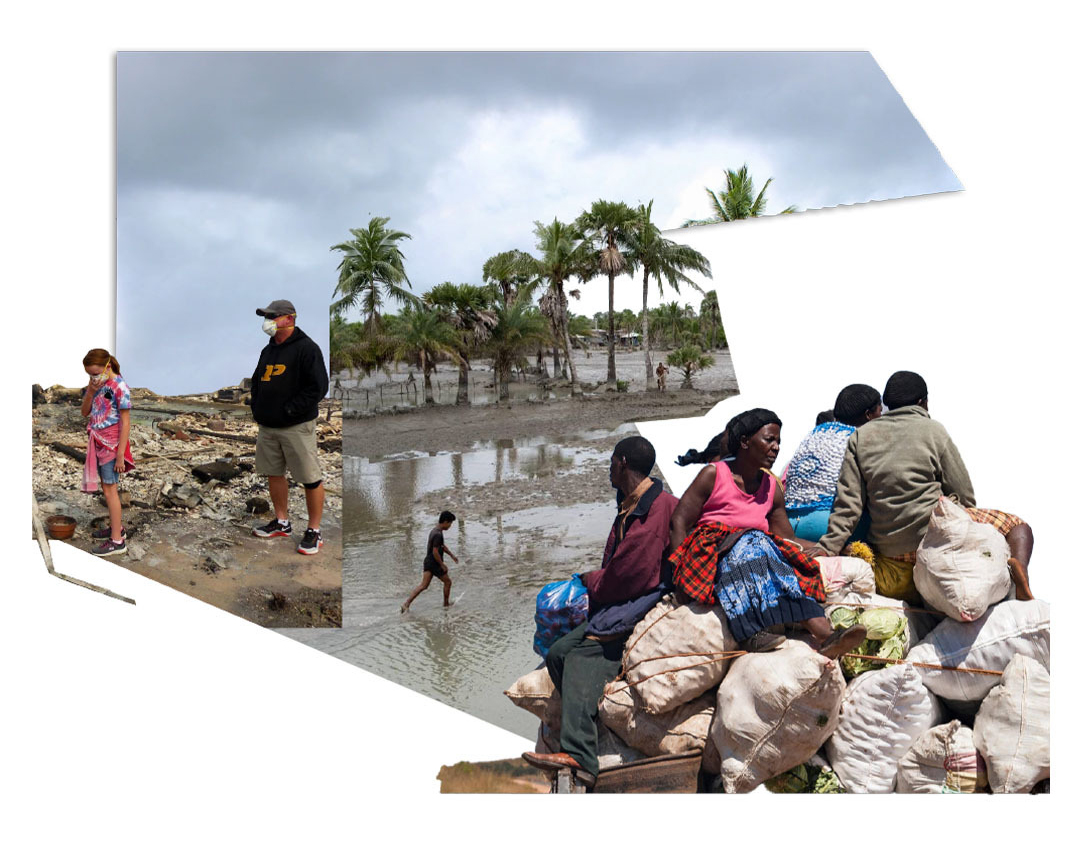"The Role of Climate Change in the Migration Crisis"
Climate change has emerged as one of the most pressing global challenges of our time. Beyond its environmental consequences, it profoundly impacts human populations, intensifying migration patterns worldwide. From rising sea levels to extreme weather events, the effects of climate change are displacing millions of people, exacerbating existing crises, and creating new challenges for governments and international organizations. This article delves into the role of climate change in the migration crisis, examining its causes, impacts, and potential solutions.
Understanding Climate-Induced Migration
What Is Climate-Induced Migration?
Climate-induced migration refers to the movement of people forced to leave their homes due to environmental changes caused by climate change. These changes include:
- Rising Sea Levels: Coastal regions and small island nations are at risk of submersion.
- Extreme Weather Events: Hurricanes, floods, and storms are becoming more frequent and severe.
- Desertification and Drought: Arid regions are experiencing reduced agricultural productivity, leading to food insecurity.
- Melting Ice and Permafrost: Communities in polar regions are losing their habitats due to thawing permafrost and glacial retreat.
Categories of Climate Migrants
Climate migrants can be categorized into three broad groups:
- Temporary Migrants: People displaced temporarily due to natural disasters like hurricanes or floods.
- Permanent Migrants: Those forced to permanently relocate because of irreversible environmental changes, such as rising sea levels.
- Seasonal Migrants: Farmers and laborers who move seasonally due to changing weather patterns affecting agriculture.
How Climate Change Drives Migration
1. Rising Sea Levels
Rising sea levels pose an existential threat to coastal communities and small island nations like the Maldives, Kiribati, and Tuvalu. The Intergovernmental Panel on Climate Change (IPCC) estimates that sea levels could rise by up to one meter by 2100. This would render many areas uninhabitable, forcing millions to relocate to safer regions.
2. Extreme Weather Events
Hurricanes, typhoons, and floods are becoming more intense and destructive due to climate change. Such events displace populations and devastate infrastructure, making it difficult for people to return to their homes. For instance, Typhoon Haiyan in the Philippines displaced more than 4 million people in 2013.
3. Desertification and Drought
Regions like the Sahel in Africa are experiencing prolonged droughts and desertification, severely impacting agricultural productivity. Farmers and herders are forced to migrate in search of arable land and water, often leading to conflicts over scarce resources.
4. Food and Water Scarcity
Climate change disrupts ecosystems, adversely affecting food production and water availability. In South Asia, erratic monsoons and glacial melting in the Himalayas threaten water security for millions, prompting migration to urban areas.
5. Loss of Livelihoods
Industries such as fisheries, agriculture, and tourism are directly affected by climate change. Communities reliant on these sectors face economic instability, pushing them to seek better opportunities elsewhere.
Impacts of Climate-Induced Migration
1. Social Challenges
- Overcrowded Urban Areas: Cities often lack the infrastructure to accommodate large influxes of migrants, leading to overcrowding, unemployment, and increased poverty.
- Cultural Disruption: Displacement can result in the loss of cultural heritage as communities are uprooted from their ancestral lands.
2. Economic Impacts
- Strain on Host Economies: Receiving regions often struggle to provide jobs, housing, and social services for incoming migrants.
- Loss of Productivity: Origin areas experience a "brain drain," losing young and skilled workers.
3. Political and Security Risks
- Resource Conflicts: Competition for dwindling resources such as water and arable land can lead to tensions between migrants and host communities.
- Border Disputes: Increased migration can strain international relations, as seen in the European migration crisis.
- Rise of Extremism: Economic and social instability can create fertile ground for extremist ideologies.
Case Studies of Climate-Induced Migration
1. The Pacific Islands
Rising sea levels have forced communities in the Pacific Islands to migrate to neighboring countries like New Zealand and Australia. Kiribati, for example, has purchased land in Fiji as a contingency plan for its population.
2. The Sahel Region
In Africa's Sahel region, desertification and drought have displaced millions. Farmers and herders are migrating southward, leading to clashes over resources with local communities.
3. Bangladesh
With a dense population and low-lying geography, Bangladesh is highly vulnerable to climate change. Coastal erosion and frequent flooding have displaced millions, many of whom migrate to urban centers like Dhaka.
4. The United States
In the U.S., hurricanes like Katrina and Harvey have displaced thousands of residents. Additionally, wildfires in California have forced communities to evacuate and seek shelter elsewhere.
Legal and Policy Challenges
1. Lack of Legal Recognition
International law does not formally recognize "climate refugees." The 1951 Refugee Convention covers persecution-based migration but does not include environmental displacement.
2. Inadequate Frameworks
Existing migration policies are often reactive rather than proactive, lacking mechanisms to address slow-onset disasters like desertification.
3. Equity and Responsibility
Developing nations bear the brunt of climate-induced migration but contribute the least to greenhouse gas emissions. This raises questions about equity and the responsibilities of developed nations.
Solutions to Address Climate-Induced Migration
1. Mitigation of Climate Change
- Global Emission Reductions: Implementing international agreements like the Paris Accord to limit global warming is critical.
- Sustainable Practices: Investments in renewable energy, reforestation, and sustainable agriculture can mitigate climate change's impact.
2. Adaptation Strategies
- Infrastructure Development: Building resilient infrastructure in vulnerable regions can reduce displacement.
- Ecosystem Restoration: Restoring mangroves, wetlands, and forests can act as natural buffers against climate disasters.
3. Legal and Policy Reforms
- Recognition of Climate Refugees: Expanding the definition of refugees to include climate-induced displacement is essential.
- Regional Cooperation: Neighboring countries must collaborate to manage migration effectively and share resources.
4. Economic Support
- International Aid: Wealthier nations should provide financial assistance to vulnerable countries for climate adaptation.
- Livelihood Programs: Supporting alternative livelihoods can reduce migration pressure in affected areas.
The Way Forward
The role of climate change in the migration crisis is undeniable and growing. As the planet continues to warm, the number of climate migrants will likely increase, posing unprecedented challenges for governments, communities, and international organizations.
Addressing this issue requires a multi-faceted approach that combines mitigation, adaptation, legal reforms, and international cooperation. By recognizing the link between climate change and migration and taking proactive measures, the global community can ensure a more equitable and sustainable future for all.
The migration crisis is not just a challenge but also an opportunity to rethink our approach to climate change, human rights, and global governance. By fostering resilience and solidarity, we can build a world that is better prepared to face humanity's greatest existential threats.




